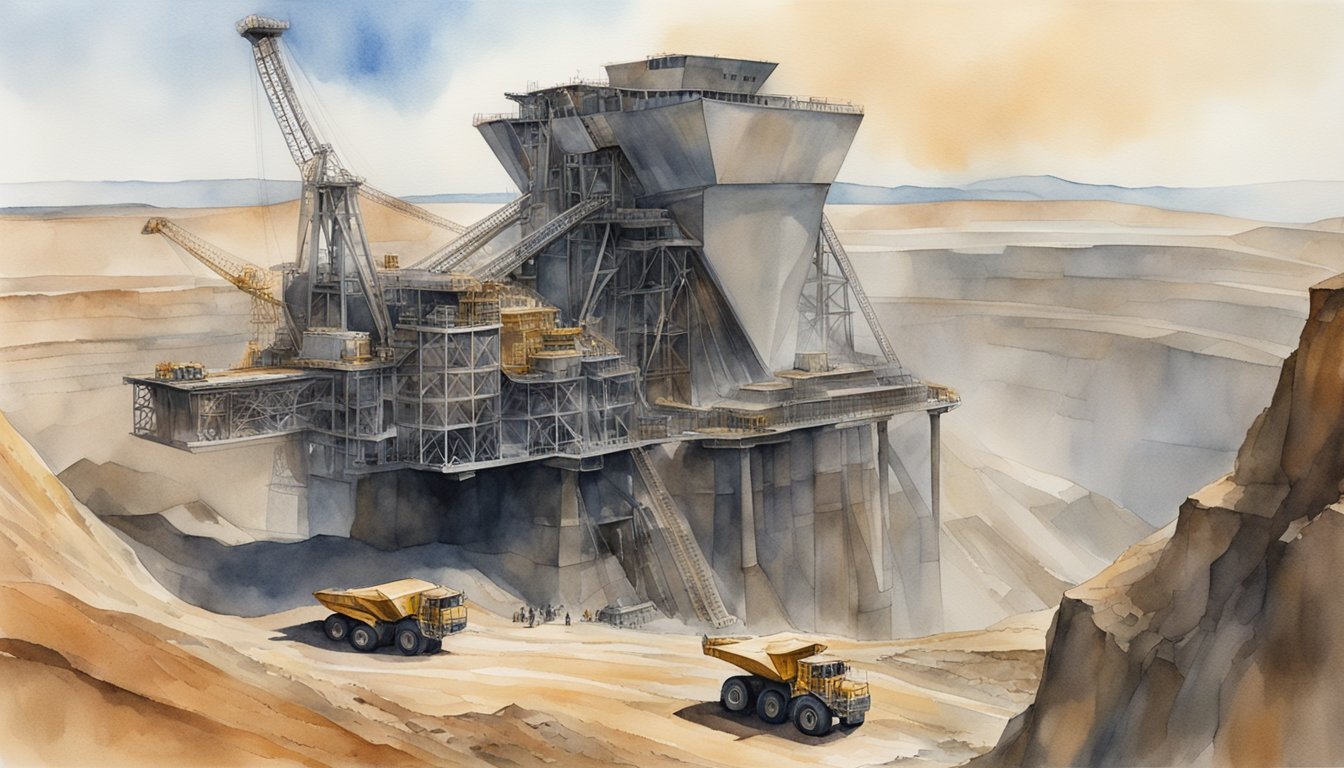Overview of Bagger 288
Historical Context
Bagger 288, built in 1978 by the German company Krupp for the energy and mining firm Rheinbraun, is a bucket-wheel excavator. Once its construction was completed, Bagger 288 superseded Big Muskie as the heaviest land vehicle in the world at 13,500 tons. This colossal machine was designed for surface coal mining and had a significant impact on the industry, due to its massive scale and impressive capabilities.
Technical Specifications
Here are a few key specifications of Bagger 288:
- Height: 95 meters (311 feet)
- Length: 215.5 meters (705 feet)
- Weight: 45,500 tons
Bagger 288 was the world’s largest land vehicle when it was completed in 1978, surpassing NASA’s Crawler-Transporter that carried the Space Shuttle and the Apollo Saturn V launch vehicle. The operation of this bucket-wheel excavator requires a team of workers to ensure proper functioning and maintenance.
Design and Structure
The design of Bagger 288 took five years to conceptualize and manufacture, and another five years for assembly. One of its standout features is a massive revolving wheel of buckets, used to shift 8.5 million cubic feet of dirt a day. When Bagger 288 reaches a seam of brown coal or other valuable materials, the buckets dig deeper into the earth to extract it for further processing.
Bagger 288, along with its twin counterpart Bagger 289, holds the title of the largest off-road tracked vehicle globally. Both machines continue to be marveled at for their impressive size and capabilities in the mining and energy industries, showcasing human ingenuity and innovation in these fields.
Operational Aspects and Impact

Mining Capabilities
Bagger 288 is a bucket-wheel excavator designed specifically for surface coal mining, which was manufactured in 1978 by Krupp. This massive machine can excavate an astonishing 240,000 cubic meters of rock every day, which contributes to the production of approximately 8.5 million tons of coal per year. The enormous bucket-wheel is mounted on tracks, allowing it to move across the mining site. Bagger 288 has a remarkable efficiency while operating at the Tagebau Hambach Mine, where it moves dirt, overburden, and lignite, also known as brown coal.
The Bagger 288 is equipped with its highly effective conveyor belt system, which helps transport the excavated material away from the digging site. Despite its heavy weight, Bagger 288 is designed to have low ground pressure, so it can travel over gravel and open-pit mines without causing significant damage to the surface.
Environmental and Economic Effects
The impact of Bagger 288 on the environment and economy cannot be understated. While this machine has greatly improved efficiency in coal mining and contributed to lower electricity production costs, it has also contributed to substantial environmental damage. One of the most noteworthy impacts is the strip mining process, which removes large amounts of soil and rock to expose the coal seams. This process leads to significant land degradation and loss of valuable ecosystems. Additionally, the extraction and burning of brown coal have contributed to increasing carbon emissions, further fueling climate change concerns.
Cultural Significance and References
Due to its sheer size and capabilities, Bagger 288 has become famous and caught the attention of various filmmakers and artists. It has been featured in fictional settings, such as the movie Ghost Rider: Spirit of Vengeance as well as the TV show Westworld. Furthermore, it has inspired a humorous music video by Joel Veitch called “Spongs in the Key of Life” in which the excavator is anthropomorphized. Its massive structure and almost otherworldly appearance have led some to speculate on its symbolic representation in media, often drawing parallels to themes of human ambition and technological advancement. The sheer scale of Bagger 288 can even spark philosophical questions, such as “is the universe infinite,” as its towering presence evokes a sense of the vast and the unknowable. Whether depicted in film, television, or music, this colossal machine continues to captivate audiences and fuel creative expression.
Bagger 288 also serves as a point of comparison for other huge machines made in history, such as NASA’s Crawler-Transporter, which carried the Space Shuttle and the Apollo Saturn V launch vehicle. Its massive scale and unique design continue to captivate the interest of people worldwide, making it a symbol of industrial progress and human engineering capabilities.

